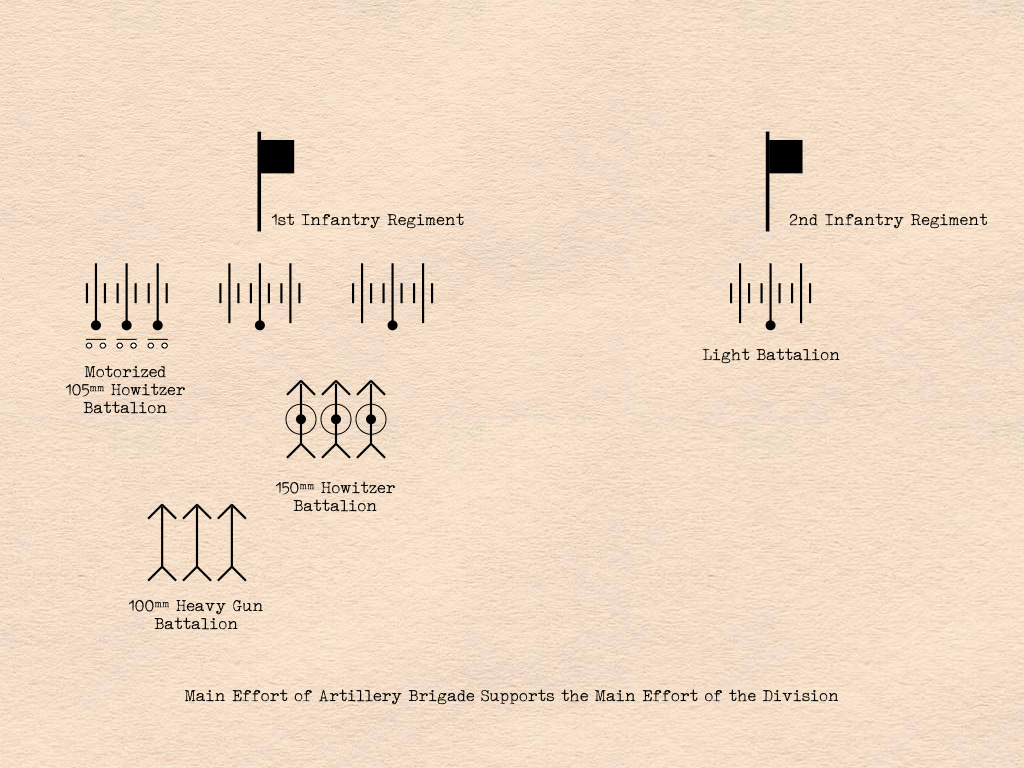In 1931, Lieutenant General Kurt Spemann, a retired German artillery officer, published an article that described the hypothetical employment of new type of artillery brigade for an infantry division. This lopsided unit, Spemann, argued, would do allow the division a better job of creating main efforts (Schwerpunkte) than a more symmetrical organization.
Spemann’s proposed brigade was divided into two very different regiments. The first of these was the “light regiment.” The second was the “heavy regiment.”
The light regiment consisted of three identical battalions, each of which would, under most circumstances, cooperate directly with one of the three infantry regiments of the division. To this end, it was equipped with light field pieces drawn by teams of horses. (Two-thirds of the light field pieces were 75mm light field guns. The other weapons in the battalion were 105mm light field howitzers.)
The heavy regiment consisted of three one-of-a-kind battalions. The first of these was armed with 100mm heavy field guns, long-range weapons that were often used to suppress enemy artillery. The second served horse-drawn 150mm heavy field howitzers. While also used for counter-battery fire, the heavy field howitzers were optimized for the destruction of field fortifications. The third battalion of the heavy regiment was a motorized unit that employed 105mm light field howitzers.
To illustrate how his artillery brigade might help the division focus its efforts, Spemann set up a hypothetical situation. In this scenario, the commanding general of the division had designated the 1st Infantry Regiment as his Schwerpunkt, directed the 2nd Infantry Regiment to support that main effort, and placed the 3rd Infantry Regiment in reserve.
The commanding general directed three artillery battalions - two light battalions and the motorized battalion - to cooperate with the 1st Infantry Regiment. He assigned the remaining light battalion to work with the 2nd Infantry Regiment. Finally, he formed the two heavy battalions into a “far fight artillery” (Fernkampfartillerie.) Known informally as the FeKa, this groupment was charged with delaying the arrival and hindering the actions of distant enemy units that posed a danger to the 1st Regiment.
If the division commander decided to shift his main effort to the 2nd Infantry Regiment, the organization proposed by General Spemann could quickly adapt to the new situation. While one of the light battalions that had been cooperating with the 1st Infantry Regiment would continue to work closely with that unit, the other two artillery battalions would begin to do things that helped the 2nd Infantry Regiment move forward. (In the case of the other light artillery battalion and the two battalions of the FeKa, would probably be a matter of shifting fires from one set of targets to another. In the case of the motorized battalion, supporting the new Schwerpunkt might involve a quick movement to new firing positions.)
Source: Generalleutnant a. D. Kurt Spemann, “Artilleristische Führungsfragen,” Wehr und Waffen, 1931, pages 78-84






